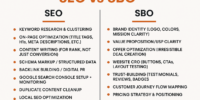Semantic SEO Tips to outrank competitors

Here are compiled and simplified 35 powerful takeaways from Koray Tuğberk Gübür’s case study titled:
“The Importance of Quality Thresholds and Predictive Ranking”
(Published on the Oncrawl website)
Core Insight:
Koray outperformed major health authority websites including Healthline, WebMD, MayoClinic.
This was achieved with just 27 articles by applying Algorithmic Authorship Rules of Semantic Content Writing.
The case study focuses on two core SEO concepts:
- Quality Thresholds
- Predictive Information Retrieval
These 35 tips are grouped into four actionable categories:
- Content Writing Techniques
- Website Quality Improvements
- Internal Linking Strategies
- Website Image Optimization Tips
The most inspiring tips are the 21st and 35th.
How to Exceed Quality Thresholds?
To exceed quality thresholds, the following are 35 simplified and enhanced tips from Koray Tuğberk Gübür, each with three examples:
1. Use factual sentence structures
❌ Apples are known for being nutritious.
✅ Apples provide essential vitamins.
❌ Coffee is known for its caffeine content.
✅ Coffee contains caffeine content.
2. Incorporate research and university studies to support claims
- Instead of “Vitamin C boosts immunity,” write “According to a 2020 study by the National Institutes of Health, Vitamin C enhances immune function.”
- Instead of “Meditation reduces stress,” write “Research from Harvard Medical School indicates that mindfulness meditation lowers cortisol levels, a key indicator of stress.”
- ❌ Exercise improves mood.
✅ A study published in the Journal of Positive Psychology found that regular exercise significantly reduces symptoms of depression.
3. Be concise and avoid unnecessary information
- ❌ The most common type of diabetes is type 2 diabetes.
✅ Type 2 diabetes accounts for 90% of diabetes cases. - Change “This is the best way to do something” to “This method shows 95% effectiveness”.
- Instead of “This product is very effective,” use “This product demonstrates 80% effectiveness in trials.”
4. Include branded images with unique compositions
- Use original photos with embedded copyright information.
- Create custom infographics with your logo and branding.
- Design unique graphics with clear attribution and licensing details.
5. Maintain context across paragraphs
- Continue Vitamin D discussion with related topics like supplementation.
- Elaborate on product features in the next paragraph.
- Keep SEO articles consistently about search engine strategies.
6. Optimize discourse integration
- Ensure sentence-to-sentence continuity on a topic.
- Koray’s tips help rank higher on SERPs. These are based on extensive experience and successful projects.
7. Use a question and answer format for headings
- Use questions to address user intent and confine context.
- Structure posts around user-searchable questions.
- ❌ H2: Affiliate Marketing
✅ H2: What is Affiliate Marketing?
8. Do not distance the question from the answer
- Write the answer immediately after the question heading.
- Do not delay answers in the content.
- ✅ Affiliate Marketing is a marketing arrangement in which affiliates receive a commission for each visit, signup or sale they generate for a merchant.
9. Expand evidence with variations
- Support answers with multiple perspectives.
- Include meta-analyses and various studies.
- Provide multiple case studies of successful strategy implementation.
- List multiple uses of tools for clarity.
10. Maintain a logical order in declarations
- Break complex processes into clear steps.
- Ensure smooth section-to-section transitions.
- Answer FAQs in logical, intuitive order.
11. Use shorter sentences
- Example 1:
❌ Due to the fact that the company has been working hard, it was a success.
✅ The company succeeded because of hard work. - Example 2: Break long sentences into multiple shorter ones to improve readability and comprehension.
- Example 3: To improve impact, start every sentence with a short explanation.
12. Decrease the count of contextless words
- Example 1: Remove phrases like “in my opinion” or “it is important to note” when they don’t add substantive value.
- Example 2: Eliminate redundant adjectives and adverbs that do not significantly enhance the meaning of the sentence.
- Example 3: Cut out filler words such as “very,” “really,” and “actually.”
- Example 4:
❌ It is important to note that Apple also helps in weight loss.
✅ Apple supports weight loss.
13. Increase the distance between anchor texts for internal links
- Example 1: Don’t give more than one internal link from a single section.
- Example 2: Spread internal links across the page rather than in consecutive sections.
- Example 3: Use optimized annotation text for each internal link.
14. Provide more information per webpage, section, paragraph, and sentence
- Example 1: Expand on key topics by providing detailed explanations, examples, and diversified perspectives.
- Example 2: Ensure each paragraph covers a distinct aspect and offers substantial insights.
- Example 3: Provide relevant and accurate information for user safety and SEO.
15. Create a proper context vector from H1 to the last heading
- Example 1: Headings (H1, H2, H3, etc.) should reflect a clear, unified outline of content.
- Example 2: Ensure headings guide readers and accurately represent context.
- Example 3: Headings should clearly communicate context to users and search engines.
16. Focus on query semantics with uncertain inference
- Example 1: Address the user intent directly in your content.
- Example 2: Cover related queries and synonyms for comprehensive coverage.
- Example 3: Use appropriate N-grams and contextual terms to support SEO.
17. Maintain consistent declarations
- Example 1: Maintain a consistent knowledge base across content.
- Example 2: Ensure consistency across multiple pages and avoid contradictions.
- Example 3: Verify and align statements site-wide.
18. Use consistent style to show brand identity
- Example 1: Apply a consistent tone, style, and formatting.
- Example 2: Use consistent branded imagery site-wide.
- Example 3: Follow a style guide across all content.
19. Avoid E-A-T negativity and list brand location
- Example 1: Include expertise, authority, and experience on the “About Us” page.
- Example 2: Provide contact info and physical location details.
- Example 3: Monitor and mitigate negative reviews or press.
20. Get reviewed by competitors or industry experts
- Example 1: Participate in industry forums and discussions.
- Example 2: Request feedback from professionals in your field.
- Example 3: Build connections and encourage peer reviews.
21. Increase the relative quality difference
- Example 1: Add more data, examples, and insights to content.
- Example 2: Refresh at least 30% of content regularly.
- Example 3: Enhance outdated content to improve rankings.
22. Include high-quality documents on the homepage
- Example 1: Highlight authoritative content directly on the homepage.
- Example 2: Promote pages with high engagement and backlinks.
- Example 3: Ensure visibility of top content in main navigation.
23. Use unique n-grams and phrase combinations
- Example 1: Identify and use phrases not found in competitor content.
- Example 2: Reflect your brand voice and perspective in content.
- Example 3: Develop original topic angles and expressions.
24. Support information points with data
- Example 1: Back claims with multiple data points and statistics.
- Example 2: Include examples and datasets where applicable.
- Example 3: Use percentages to add context and credibility.
25. Add more entities and attribute values
- Example 1: Mention semantically relevant entities.
- Example 2: Include related subtopics and attributes.
- Example 3: Clarify entity values in content structure.
26. Focus each page on a single macro context
- Example 1: Dedicate each page to a primary topic.
- Example 2: Use internal links for related content branches.
- Example 3: Ensure macro context is clear at first glance.
27. Complete topics with full detail
- Example 1: Cover each subject thoroughly.
- Example 2: Go beyond competitor content in depth.
- Example 3: Provide all relevant user-friendly details.
28. Reformat content using multiple media types
- Example 1: Create infographics, audio, and video formats.
- Example 2: Use multimedia for clearer explanations.
- Example 3: Include audio versions for accessibility.
29. Link to subqueries of the main topic
- Example 1: Internally link to related subtopics.
- Example 2: Connect evolving content branches via links.
- Example 3: Help crawlers navigate topic hierarchies.
30. Use fewer but more meaningful links
- Example 1: Prioritize high-value internal links.
- Example 2: Focus on content depth over linking frequency.
- Example 3: Justify each link with clear relevance.
31. Use structured data (FAQ and article)
- Example 1: Enable rich snippets for FAQs and questions.
- Example 2: Tag articles with schema for clarity.
- Example 3: Help search engines index structured content faster.
32. Establish authorship authority
- Example 1: Display author bios and credentials.
- Example 2: Highlight expert contributions and citations.
- Example 3: Use author photos and public profiles.
33. Avoid product promotion in health content
- Example 1: Keep health explanations unbiased.
- Example 2: Refrain from sales language in medical text.
- Example 3: Focus on educational and informative value.
34. Use branded CTAs clearly distinct from content
- Example 1: Visually separate CTAs from informational text.
- Example 2: Use custom CTAs matching brand identity.
- Example 3: Avoid blending promotional content with info.
35. Refresh at least 30% of content
- Example 1: Update data older than two years.
- Example 2: Add new sections or content regularly.
- Example 3: Revise layout or tone to stay current.






